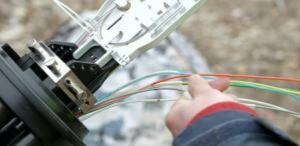On March 27, CanArctic Inuit Networks, a majority Inuit-owned company, signed a memorandum of understanding (MOU) with Quintillion, an Alaska-based Arctic fibre network operator to signal their commitment to building the SednaLink subsea fibre-optic network from Happy Valley-Goose Bay, Labrador to Iqaluit.
The project is slated to be underway in 2024, CanArctic stated, and it is badly needed, according to the federal auditor general’s 2023 report on Connectivity in Rural and Remote Areas. Progress on high-speed internet and mobile services in rural, remote and Indigenous communities lags behind the rest of Canada and represents an increasing economic gap..
“Connectivity is also a driver of economic growth for communities across the country, whether they are urban, rural, or remote,” the report reads, with those communities having to increasingly pay more for continued slower services, compared to the rest of Canada.
“The impact of unaffordable access is felt by those communities who need it most,” the report continues, with the Covid-19 pandemic serving to highlight that gap in places like Nunavut communities.
Madeline Redfern, CanArctic’s chief operating officer, said Nunavut has needed a fibre-optic network for a very long time.
“Iqaluit is the only capital city in Canada without fibre,” she said. “Without fibre, our governments, businesses, NGOs and residents struggle with never-ending connectivity challenges.”
Emails, online banking, public service announcements, payments at the grocery store and bank/ATM withdrawals are just some of the things largely dependent on the internet in the modern age.
“It hampers productivity and it can become a safety issue when the networks aren’t working,” said Redfern.
“Not long ago, RCMP kept issuing notices to residents that if they needed police services, that people would have to go to the detachment. This isn’t reasonable or possible such as in a domestic violence situation or someone breaking into your home or apartment.”
Qunintillion and CanArctic also have additional future network plans for the Arctic which would be deployed in a phased approach as well as plans to connect to other networks to ensure redundancy.
“Both companies see substantial synergy and alignment with our respective plans to build, marine fibre-optic networks through the North American Arctic,” said George Tronsrue III, Quintillion’s CEO in a statement from the company.
According to Redfern, Iqaluit could have had a fibre-optic network this year already if a previous 2020 proposal was accepted.
Artists, businesses, everyone is impacted by the slow internet. It leads occurrences such as Inuit or Nunavut video productions having to be edited elsewhere, largely being stored on servers down south or delays on larger data files being sent.
“The rest of the world has better access to our Inuit cultural content than we do,” she said.
Having a speedy fibre optic network is also important for federal interests, added Redfern, with Nunavut and other Arctic regions hosting the North Warning System and other defence facilities.
“At a time when both Canada and America are facing elevated threats from foreign aggressors, this collaboration can make a significant contribution to the defence of the entire North American continent.”
